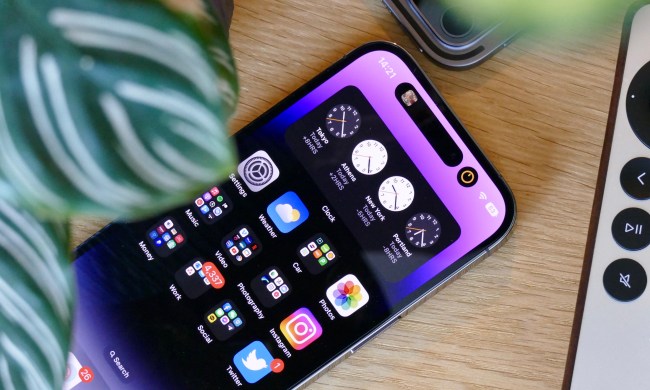Introduced with iOS 13.0, Dark Mode lets iPhone and iPad users control their device using a darker color palette than the default white. Not only is the darker color scheme easier on the eyes (literally), but it can result in real-life health benefits, including improved sleep.
Want to test out Dark Mode for yourself? Follow the steps below to activate Dark Mode in iOS and transform Apple’s blinding, white background into something a bit more palatable.
What is Dark Mode?
Just exactly what is this “Dark Mode”? While it may sound like a way for your iPhone to relive your awkward teenage goth years, it’s far simpler than that. In basic terms, it’s a color swap for your phone’s operating system, changing iOS’s traditional eye-searing light backgrounds to a darker hue, meaning your phone’s screen is less bright. As such, it’s the perfect mode for night, when you don’t want a bright-white theme shining into your eyes.
Google has been introducing Dark Mode into its apps for the last year, and Android Q is set to add the mode on a system-wide basis; iOS 13 does the same. This means you’ll be able to turn on the mode to change not only your system theme, but all of Apple’s own apps, and supported third-apps to show a darker theme, too.
However, it’s important to note this mode will not reduce blue light. It’s alleged your body reacts to blue light from your smartphone display in the same way it reacts to sunlight, and exposure can impair your ability to sleep properly. Only a blue light filter will reduce blue light.
How to use Dark Mode
It’s easy to get started with iOS 13’s Dark Mode. Just head to your Settings app, then touch Display & Brightness. Apple has made Dark Mode immediately obvious under the Appearance header, and you can quickly choose between Light or Dark by tapping either image. The change will happen immediately, and if you head to one of Apple’s apps, such as Safari, you should see that the internet browser has taken on a darker hue.
How to put Dark Mode on an automatic toggle
Want to shine bright with a light theme in the daytime, but shift to a darker theme when the sun goes down? There’s no need to dive into the settings every evening to scratch your itch — you can set an automatic toggle to change between the two when the time is right.
To set this up, head back into your Dark Mode settings by tapping Settings > Display & Brightness. Then tap the toggle by Automatic to turn the automatic toggling on. The mode defaults to Sunset to Sunrise by default, and you can change that by tapping the Options field underneath the Automatic toggle. Sunrise to Sunset will turn on Dark Mode when the sun goes down — as ascertained by your GPS location. Otherwise, you can hit Custom Schedule to set your own Dark Mode timetable.
How to set a wallpaper that reacts to Dark Mode
Did you know certain iOS 13 wallpapers can react to Dark Mode? It’s a small touch, but a fun one. To set a dynamic color-shifting wallpaper, head to your Settings app, then hit Wallpapers > Choose a New Wallpaper > Stills. Wallpapers that react to Dark Mode changes are marked with a small, bisected circle in the bottom-right, and have a line down the middle of the image to show the changes you can expect.
If you prefer to keep your own personalized wallpaper, head back to the Wallpaper options and toggle the option for Dark Appearance Dims Wallpaper. While your wallpaper won’t change like reacting wallpapers, it will dim it slightly, so any lighter areas won’t dazzle you while Dark Mode is active.











